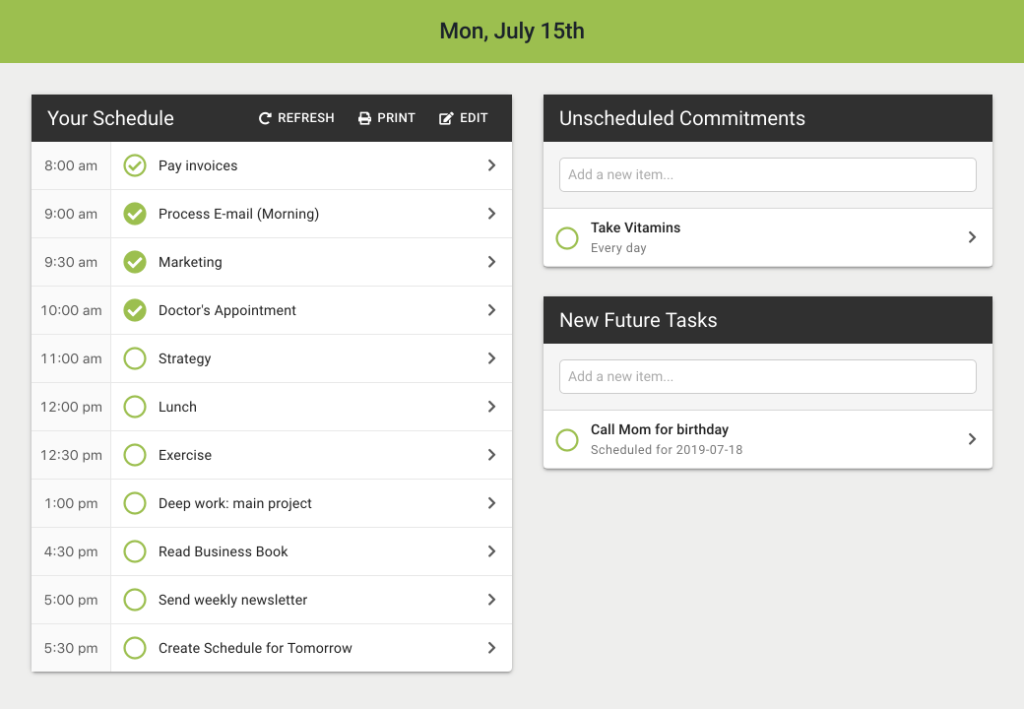Perhaps you’ve heard that you should be adding buffer time when estimating projects or planning your day. Even outside the discipline of time management buffers are recommended for financial stability—to keep a certain amount of savings to buffer against unexpected expenses. But how do buffers actually work to make you more resilient to unexpected events?
On the surface, the answer is easy: buffers help absorb shocks—unexpected financial expenses, time lost to interruptions, or when things take longer than you expect them to.
However, buffers do more than merely absorbing shocks. Let’s look at 3 reasons you need to be using buffers.
1. Buffers Change Your Mindset
When you don’t have enough of something—whether that’s time, money, or even love—it can create a scarcity mindset. In this mindset, your biology changes to help you preserve what you have. This makes sense. If we’re in a drought, we need to preserve water.
What is often missed is that your mindset directs your energy and focus. When you are in a scarcity mindset, you put extra energy and focus into managing the resource that is scarce. It affects not just how you think, but how you spend your time.
That’s bad enough when the resource that is scarce is something like money. But it’s worse when the resource is time. Having a scarcity mindset when you are pressed for time causes you to use your existing time less efficiently, creating even more of a time crunch.
The result can be a downward spiral where the less time you feel you have, the more additional time is lost worrying about and dealing with that lack.
Buffers counteract this by preventing you from slipping into a scarcity mindset and helping you remain in a sufficiency mindset. If you have a buffer, you have room to maneuver, allowing you to relax and stay more focused. The time you might spend worrying about or managing your lack of resources is now freed up to do more productive activities.
2. Buffers Give You Room to Maneuver
Often times in life the opportunities that provide the best payoff are those that require a deep investment of time, money or other resources. But due to the uncertainty in many tasks—especially novel or complex tasks we’ve never done before—we don’t know upfront the total amount of resources that will be required. So we estimate.
But estimations are, by their nature, wrong. Estimations can never be exact every time, otherwise they wouldn’t be estimations. There’s always some wiggle room. And when estimations fall short, we need buffers to absorb the extra amount that wasn’t in our estimations.
There is a way around this, of course. If your estimates are too low, you can always choose to cut corners or lower your quality expectations. Reducing scope helps us manage time when something is taking us longer than we expected.
Sometimes reducing scope so you can meet your original time estimations or allocations makes the most sense. Not everything needs to be perfect and learning when “done” is better than “perfect” is a key part of getting better at time management.
However, sometimes the best approach is to spend more resources—taking more time to do it better or spending more money to purchase a higher quality item. Sometimes the payoff can be better if you invest a little more.
But this should be a conscious choice, not a choice you are forced into because you have no resources left.
Buffers give you the room to maneuver so you can make these better choices, so you can decide when it’s worth investing more time or money into something and when it’s not.
3. Buffers Aid Decision-Making
Making good decisions isn’t just a matter of mindset and extra resources. Buffers change how and how often you make decisions.
When we don’t feel like you have enough time, we often stay focused on execution and don’t take the time to take a step back and plan. Yet planning is critical to getting through times of scarcity.
While it may seem counterintuitive, often the best way to deal with a time crunch on a project is to stop working on that project and switch back into planning mode. Planning mode allows you to see the big picture and make better trade-off decisions on how you’ll approach your next execution phase.
Buffers not only help you feel less constrained to you take the time to do these critical planning sessions, but improve the effectiveness of those sessions.
When we are in a scarcity mindset, research shows that our cognitive task performance, working memory and logical thinking all suffer—we make worse decisions. When those decisions make the situation worse, we can get lost in a downward spiral.
Keeping enough of a buffer so we can make good decisions can provide the opposite effect: better decisions lead to more resources, which gives us more of a buffer to make better decisions with.
What To Do If You Lack a Buffer
All this is well and good if you added enough buffers into your planning process. But what if you didn’t? Or what if you added those buffers and unexpected conditions caused you to use all of your buffers?
In these situations, a few things can help:
- Shift Your Mindset
While your mindset is partially controlled by your biology, that means it is also partially controlled by you. When you feel yourself slipping into a scarcity mindset, envision what it would feel like to have abundance. Practicing being grateful for what you have and taking time for self-care can help as well. - Take Time to Plan
Planning helps you see opportunities you otherwise might miss. The planning process itself can also shift your brain into executing more effectively. The process of setting goals and figuring out how to implement our intentions has been shown to increase the success that comes from that planning. - Set Up Rewards
Rewards can help improve our cognitive performance on some tasks and research points to the potential for rewards to help reduce the effects of a scarcity mindset. Focusing on the reward may help us avoid focusing on the scarcity, allowing us to work more effectively.
Regardless of which approach you take, monitor your use of buffers and use that knowledge to improve what buffers you create for the future. Even if you use up all of your buffers today, over time you can learn to create larger and better buffers that increase your resilience and stability in the future.








